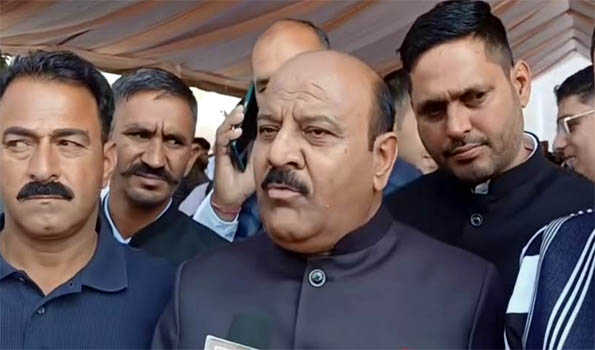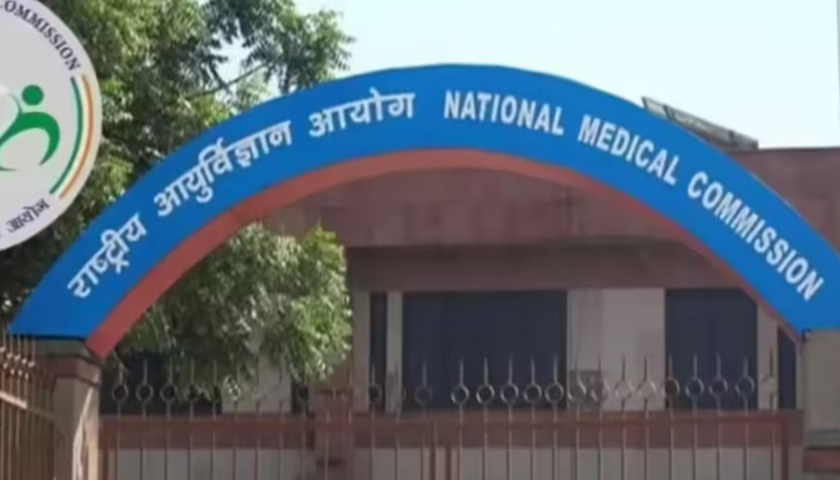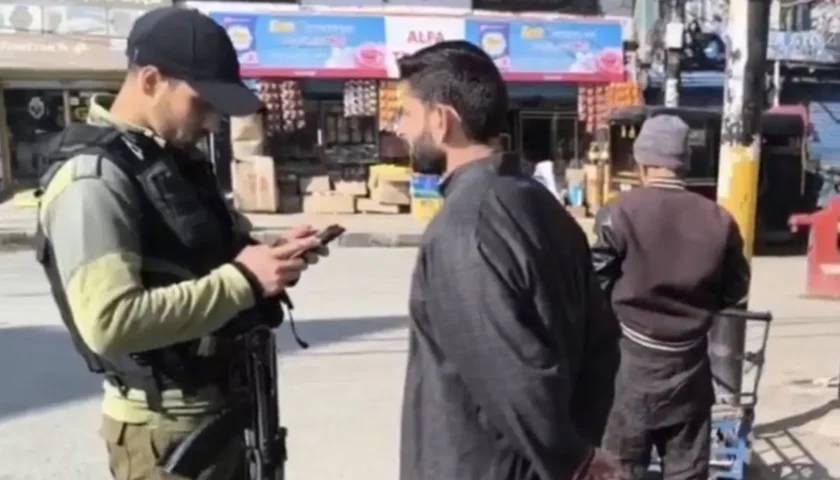J&K Facing Dual Governance Challenge – Deputy CM Warns of Administrative Gridlock
By: Javid Amin | 23 September 2025
Jammu & Kashmir, often described as the “crown of India,” is once again at the crossroads of governance and democracy. The region’s Deputy Chief Minister (Dy CM) has candidly acknowledged that Jammu & Kashmir is facing a “dual governance challenge”—a phrase that has set off heated debate among political analysts, opposition parties, and ordinary citizens.
At the heart of this challenge lies a clash between bureaucratic authority and elected representatives. On one side, the Union Territory (UT) administration, largely steered by New Delhi-appointed officials, exercises direct control over policy execution. On the other, newly elected legislators find themselves increasingly sidelined, with limited influence over decision-making. The Dy CM’s remarks come just weeks before the Assembly session scheduled for October 13, where issues such as flood damage recovery, MLA detentions, and tourism revival are expected to dominate discussions.
This article takes a deep dive into the unfolding scenario—examining what the Dy CM said, why it matters, the reactions from opposition parties, and the potential implications for J&K’s governance and democratic future.
What the Deputy CM Said
During a press briefing in Jammu, the Dy CM minced no words in expressing concern:
“We are facing a dual governance challenge—where elected voices are sidelined and bureaucratic control dominates. This imbalance is hurting delivery and trust.”
The statement resonates with a long-standing perception in J&K—that despite the restoration of electoral processes, real power still rests with bureaucrats and central administrators.
-
Sidelining of Elected Representatives: MLAs argue that they are unable to intervene meaningfully in constituency-level grievances because most approvals require bureaucratic clearance.
-
Bureaucratic Overreach: Senior officials often make critical policy decisions without legislative consultation, leading to friction.
-
Erosion of Trust: Citizens, who vote with the expectation of accountability and responsiveness, feel disconnected when their elected leaders lack authority.
This frank admission by a sitting Deputy CM is significant because it publicly validates what opposition parties and civil society have been pointing out for months: the governance model in J&K is out of balance.
Governance vs. Ground Reality
The Dy CM’s statement underscores three critical issues shaping J&K’s governance crisis:
1. Delayed Decisions and Development Paralysis
Several development projects—ranging from road connectivity in rural Jammu to tourism infrastructure in Kashmir—have reportedly been delayed due to overlapping jurisdictions. Proposals cleared by MLAs often sit idle on bureaucratic desks, awaiting approvals from higher offices in Srinagar or Delhi.
-
Example: A flood rehabilitation project in South Kashmir was stuck for six months due to differences between the District Development Council and the UT administration.
-
Impact: Villages remain vulnerable, reconstruction lags, and public frustration deepens.
2. Public Disconnect and Grievance Redressal Failure
Citizens in Kashmir and Jammu repeatedly complain that grievances remain unresolved, even when raised through elected representatives. With MLAs stripped of real-time authority, ordinary people often find themselves shuttling between bureaucratic offices.
-
Case Study: A widow in Baramulla seeking housing relief reportedly had her file transferred five times between departments, despite intervention from her local MLA.
-
Result: Public perception of governance shifts from “accessible” to “alienated.”
3. Policy Paralysis and Lost Opportunities
Experts warn that the absence of clear alignment between elected leaders and bureaucrats risks policy paralysis. Without consensus, long-term reforms—whether in education, healthcare, tourism, or employment—fail to move forward.
-
Tourism Sector Example: Despite bumper tourist arrivals in Gulmarg and Pahalgam, proposals for expanding eco-tourism facilities remain stuck.
-
Youth Employment Schemes: Skill-development programs are delayed as bureaucratic committees demand “further review.”
This stalemate reflects a fundamental contradiction: while elections were restored to bring democracy closer to people, bureaucratic centralization continues to dominate governance.
Opposition Reacts
The Dy CM’s remarks found quick resonance with opposition parties, particularly the Jammu & Kashmir National Conference (JKNC) and the People’s Democratic Party (PDP).
-
JKNC’s Position: Senior JKNC leaders argued that the Dy CM’s statement only confirms their long-held stance—that elected representatives are being reduced to “decorative figures” in J&K’s governance.
-
PDP’s Criticism: A senior PDP spokesperson remarked, “You can’t run Kashmir on paperwork alone. People need accountable leadership.”
Both parties are demanding:
-
Restoration of full legislative powers to the Assembly.
-
Transparency in administrative decision-making.
-
Greater respect for democratic mandates.
Opposition leaders also allege that the UT bureaucratic setup is answerable only to Delhi, not to the elected Assembly. This, they argue, undermines the spirit of democracy and risks alienating the population further.
The Political Backdrop
The Dy CM’s intervention is not happening in a vacuum. Several political and social developments form the backdrop:
-
MLA Detentions: Multiple MLAs have faced detention in the past two years, sparking allegations of curtailing dissent.
-
Flood Damage: Recent floods in Jammu and Kashmir have left infrastructure battered, requiring urgent policy coordination.
-
Tourism Recovery: With tourism emerging as J&K’s economic lifeline, delays in policy execution could stall recovery.
-
Upcoming Assembly Session: The October 13 session is expected to be contentious, with opposition parties pressing hard on these governance failures.
This backdrop explains why the Dy CM’s remarks carry both political and administrative weight—they acknowledge internal fractures even within the ruling coalition.
Expert Opinions: Why Dual Governance Hurts
Political experts and policy analysts view J&K’s governance challenge as a structural flaw.
-
Democratic Deficit: Elections are meaningless if legislators have no decision-making authority.
-
Bureaucratic Dominance: While bureaucrats ensure technical execution, policy legitimacy comes from elected representatives.
-
Risk of Alienation: The longer the disconnect persists, the greater the risk of public alienation in a region already sensitive to governance credibility.
A Srinagar-based political analyst summed it up:
“Dual governance is like a vehicle with two drivers steering in opposite directions—it can only end in a crash.”
The Stakes for J&K’s Future
The implications of unresolved governance contradictions are enormous:
-
Economic Impact: Stalled projects mean lost jobs, delayed infrastructure, and missed investment opportunities.
-
Social Frustration: Citizens lose faith in governance structures, risking protests and unrest.
-
Political Credibility: Both the ruling coalition and New Delhi risk appearing insensitive to democratic norms.
If unaddressed, the dual governance challenge could transform from an administrative hurdle into a full-blown political crisis.
Possible Solutions and the Way Forward
Experts suggest a few corrective measures:
-
Clear Demarcation of Powers: Define roles between UT administration and elected Assembly to avoid overlaps.
-
Institutional Coordination Mechanisms: Regular joint sessions between bureaucrats and MLAs to fast-track decisions.
-
Greater Transparency: Publish timelines for project approvals and grievance redressal.
-
Citizen-Centric Governance: Strengthen local bodies (Panchayats, DDCs) to bridge the gap between citizens and administration.
Ultimately, governance must be both efficient and accountable. Bureaucrats bring expertise, but legitimacy flows from the ballot box.
Bottom-Line
The Deputy CM’s candid acknowledgment of a dual governance challenge has peeled back the curtain on J&K’s political reality. His words highlight what citizens and opposition leaders have long felt: that democracy in the region is incomplete without empowering elected representatives.
As the October 13 Assembly session approaches, the debate over governance in Jammu & Kashmir will likely intensify. The outcome could shape not only the region’s immediate recovery efforts but also its long-term democratic future.
J&K today stands at a critical juncture. Will it continue with bureaucratic dominance at the cost of elected voices, or will it restore balance in governance? The answer will define the trust of millions in India’s democratic promise to its most sensitive region.




